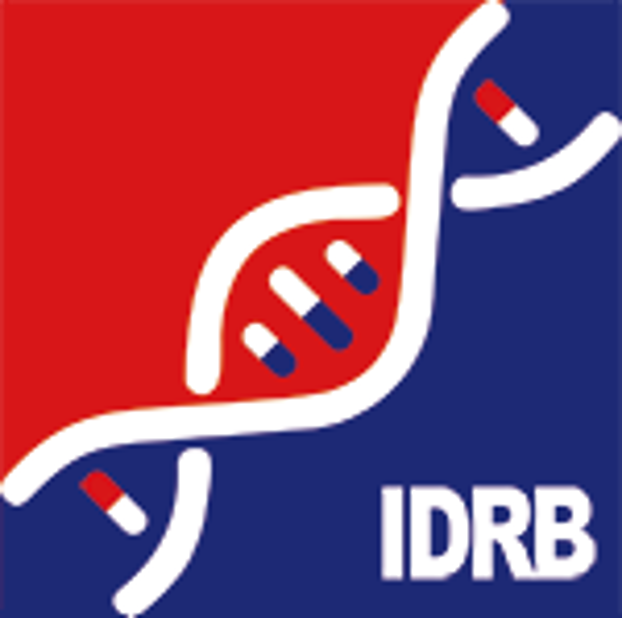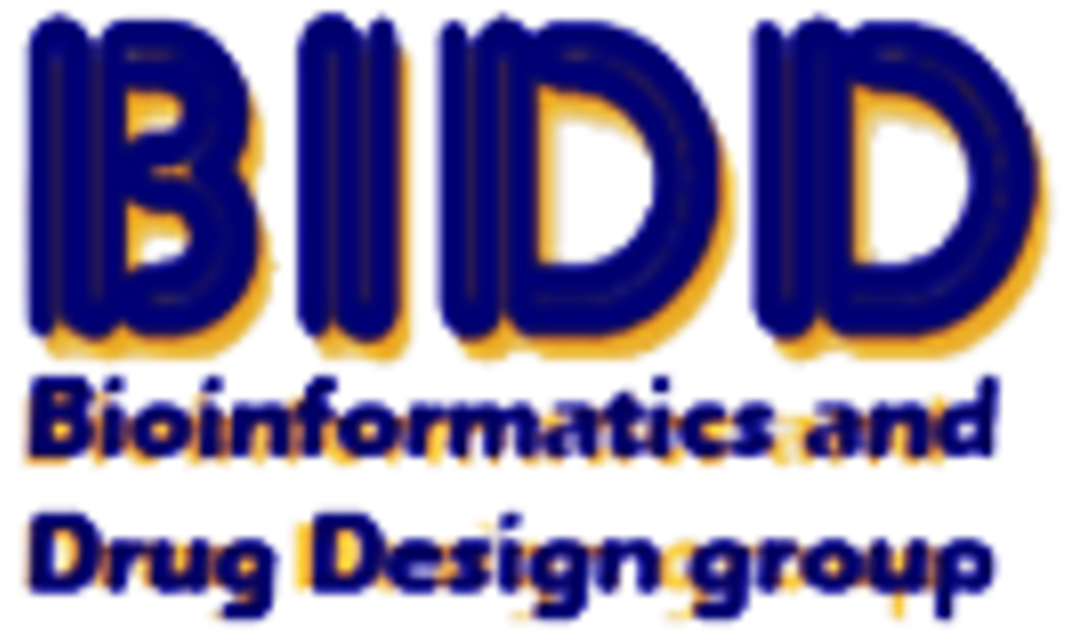Target Information
| Target General Infomation | |||||
|---|---|---|---|---|---|
| Target ID |
T42446
|
||||
| Former ID |
TTDS00022
|
||||
| Target Name |
Gamma-aminobutyric acid B receptor
|
||||
| Gene Name |
GABBR2
|
||||
| Synonyms |
GABA B receptor; GABA(B) receptor; GABAB receptor; Gamma-aminobutyric acid type b receptor; GABBR2
|
||||
| Target Type |
Successful
|
||||
| Disease | Anxiety disorder [ICD9: 300, 311; ICD10: F32, F40-F42] | ||||
| Absence seizures [ICD10: G40] | |||||
| Cancer [ICD9: 140-229; ICD10: C00-C96] | |||||
| Depression [ICD9: 311; ICD10: F30-F39] | |||||
| Drug abuse [ICD9: 303-304; ICD10: F10-F19] | |||||
| Fragile X syndrome [ICD9: 332, 759.83; ICD10: F02.3, G20, Q99.2] | |||||
| Nicotine dependence [ICD9: 305.1; ICD10: F17] | |||||
| Partial seizures [ICD9: 345.4, 345.5; ICD10: G40.0, G40.2] | |||||
| Pain [ICD9: 338, 356.0, 356.8,780; ICD10: G64, G90.0, R52, G89] | |||||
| Schizophrenia [ICD9: 295; ICD10: F20] | |||||
| Function |
Component of a heterodimeric G-protein coupledreceptor for GABA, formed by GABBR1 and GABBR2. Within the heterodimeric GABA receptor, only GABBR1 seems to bind agonists, while GABBR2 mediates coupling to G proteins. Ligand binding causes a conformation change that triggers signaling via guanine nucleotide-binding proteins (G proteins) and modulates the activity of down-stream effectors, such as adenylate cyclase. Signaling inhibits adenylatecyclase, stimulates phospholipase A2, activates potassium channels, inactivates voltage-dependent calcium-channels and modulates inositol phospholipid hydrolysis. Plays a critical role in the fine-tuning of inhibitory synaptic transmission. Pre-synaptic GABA receptor inhibits neurotransmitter release by down-regulating high-voltage activated calcium channels, whereas postsynaptic GABA receptor decreases neuronal excitability by activating a prominent inwardly rectifying potassium (Kir) conductance that underlies the late inhibitory postsynaptic potentials. Not only implicated in synaptic inhibition but also in hippocampal long-term potentiation, slow wave sleep, muscle relaxation and antinociception.
|
||||
| BioChemical Class |
GPCR glutamate
|
||||
| Target Validation |
T42446
|
||||
| UniProt ID | |||||
| Sequence |
MASPRSSGQPGPPPPPPPPPARLLLLLLLPLLLPLAPGAWGWARGAPRPPPSSPPLSIMG
LMPLTKEVAKGSIGRGVLPAVELAIEQIRNESLLRPYFLDLRLYDTECDNAKGLKAFYDA IKYGPNHLMVFGGVCPSVTSIIAESLQGWNLVQLSFAATTPVLADKKKYPYFFRTVPSDN AVNPAILKLLKHYQWKRVGTLTQDVQRFSEVRNDLTGVLYGEDIEISDTESFSNDPCTSV KKLKGNDVRIILGQFDQNMAAKVFCCAYEENMYGSKYQWIIPGWYEPSWWEQVHTEANSS RCLRKNLLAAMEGYIGVDFEPLSSKQIKTISGKTPQQYEREYNNKRSGVGPSKFHGYAYD GIWVIAKTLQRAMETLHASSRHQRIQDFNYTDHTLGRIILNAMNETNFFGVTGQVVFRNG ERMGTIKFTQFQDSREVKVGEYNAVADTLEIINDTIRFQGSEPPKDKTIILEQLRKISLP LYSILSALTILGMIMASAFLFFNIKNRNQKLIKMSSPYMNNLIILGGMLSYASIFLFGLD GSFVSEKTFETLCTVRTWILTVGYTTAFGAMFAKTWRVHAIFKNVKMKKKIIKDQKLLVI VGGMLLIDLCILICWQAVDPLRRTVEKYSMEPDPAGRDISIRPLLEHCENTHMTIWLGIV YAYKGLLMLFGCFLAWETRNVSIPALNDSKYIGMSVYNVGIMCIIGAAVSFLTRDQPNVQ FCIVALVIIFCSTITLCLVFVPKLITLRTNPDAATQNRRFQFTQNQKKEDSKTSTSVTSV NQASTSRLEGLQSENHRLRMKITELDKDLEEVTMQLQDTPEKTTYIKQNHYQELNDILNL GNFTESTDGGKAILKNHLDQNPQLQWNTTEPSRTCKDPIEDINSPEHIQRRLSLQLPILH HAYLPSIGGVDASCVSPCVSPTASPRHRHVPPSFRVMVSGL |
||||
| Structure |
4F11; 4F12; 4MQE; 4MQF; 4MR7; 4MR8; 4MR9; 4MRM; 4MS1; 4MS3; 4MS4; 4PAS; 4MQE; 4MQF; 4MR7; 4MR8; 4MR9; 4MRM; 4MS1; 4MS3; 4MS4; 4PAS
|
||||
| Drugs and Mode of Action | |||||
| Drug(s) | Gabapentin | Drug Info | Approved | Partial seizures | [1], [2] |
| Progabide | Drug Info | Approved | Depression | [3] | |
| Gabapentin | Drug Info | Phase 3 | Cancer | [2], [4] | |
| STX209 | Drug Info | Phase 3 | Fragile X syndrome | [5] | |
| SGS742 | Drug Info | Phase 2 | Schizophrenia | [6] | |
| SCH 50911 | Drug Info | Terminated | Absence seizures | [7], [8] | |
| Inhibitor | ((E)-3-Amino-propenyl)-methyl-phosphinic acid | Drug Info | [9] | ||
| ((Z)-3-Amino-propenyl)-methyl-phosphinic acid | Drug Info | [9] | |||
| (3-Amino-1-ethyl-propyl)-methyl-phosphinic acid | Drug Info | [9] | |||
| (3-Amino-1-hydroxy-propyl)-methyl-phosphinic acid | Drug Info | [9] | |||
| (3-Amino-phenyl)-phosphonic acid diphenyl ester | Drug Info | [10] | |||
| (3-Amino-propyl)-difluoromethyl-phosphinic acid | Drug Info | [9] | |||
| (3-Amino-propyl)-hexyl-phosphinic acid | Drug Info | [11] | |||
| (3-Amino-propyl)-hydroxymethyl-phosphinic acid | Drug Info | [9] | |||
| (3-Amino-propyl)-phosphonic acid | Drug Info | [10] | |||
| (R)-4-Amino-3-(4-chloro-phenyl)-butyric acid | Drug Info | [12] | |||
| (R)-5-Amino-3-(4-chloro-phenyl)-pentanoic acid | Drug Info | [12] | |||
| 3-Amino-propane-1-sulfonic acid | Drug Info | [11] | |||
| 3-ammoniopropane-1-sulfinate | Drug Info | [13] | |||
| 4-Amino-3-(2-chloro-phenyl)-butyric acid | Drug Info | [14] | |||
| 4-Amino-3-(4-fluoro-phenyl)-butyric acid | Drug Info | [14] | |||
| 4-Amino-3-(5-bromo-thiophen-2-yl)-butyric acid | Drug Info | [14] | |||
| 4-Amino-3-(5-chloro-thiophen-2-yl)-butyric acid | Drug Info | [14] | |||
| 4-Amino-3-(5-methyl-thiophen-2-yl)-butyric acid | Drug Info | [14] | |||
| 4-Amino-3-benzofuran-2-yl-butyric acid | Drug Info | [15] | |||
| 4-Amino-3-thiophen-2-yl-butyric acid | Drug Info | [14] | |||
| CGP-27492 | Drug Info | [11] | |||
| CGP-34938 | Drug Info | [9] | |||
| CGP-35024 | Drug Info | [11] | |||
| CGP-35582 | Drug Info | [9] | |||
| CGP-36216 | Drug Info | [11] | |||
| GAMMA-AMINO-BUTANOIC ACID | Drug Info | [14] | |||
| Antagonist | 2-hydroxy-saclofen | Drug Info | [16] | ||
| CGP 54626A | Drug Info | [16] | |||
| CGP 56999A | Drug Info | [16] | |||
| CGP 62349 | Drug Info | [16] | |||
| CGP 64213 | Drug Info | [16] | |||
| CGP 71872 | Drug Info | [16] | |||
| Gabapentin | Drug Info | [17] | |||
| Phaclofen | Drug Info | [18], [19] | |||
| saclofen | Drug Info | [16] | |||
| SCH 50911 | Drug Info | [20] | |||
| [125I]CGP 64213 | Drug Info | [16] | |||
| [125I]CGP 71872 | Drug Info | [16] | |||
| Agonist | amino-propylphosphinic acid | Drug Info | [16] | ||
| CGP 47656 | Drug Info | [16] | |||
| CGP-44532 | Drug Info | [21], [22] | |||
| Progabide | Drug Info | [23], [24], [25] | |||
| SKF-97541 | Drug Info | [21] | |||
| TG-3030 | Drug Info | [26] | |||
| Modulator | BHF-177 | Drug Info | [26] | ||
| CGP-29030A | Drug Info | [27], [4] | |||
| GABA-B receptor PAM | Drug Info | [26] | |||
| SGS742 | Drug Info | [6] | |||
| STX209 | Drug Info | [26] | |||
| Target Expression Profile (TEP) and Drug Resistance Mutation (DRM) | |||||
| TEP | EXP Info | ||||
| Pathways | |||||
| KEGG Pathway | cAMP signaling pathway | ||||
| Neuroactive ligand-receptor interaction | |||||
| GABAergic synapse | |||||
| Estrogen signaling pathway | |||||
| Morphine addiction | |||||
| Reactome | Activation of G protein gated Potassium channels | ||||
| G alpha (i) signalling events | |||||
| Class C/3 (Metabotropic glutamate/pheromone receptors) | |||||
| Inhibition of voltage gated Ca2+ channels via Gbeta/gamma subunits | |||||
| WikiPathways | GPCRs, Class C Metabotropic glutamate, pheromone | ||||
| Neurotransmitter Receptor Binding And Downstream Transmission In The Postsynaptic Cell | |||||
| Potassium Channels | |||||
| GPCR ligand binding | |||||
| GPCR downstream signaling | |||||
| References | |||||
| REF 1 | Use of second-generation antiepileptic drugs in the pediatric population. Paediatr Drugs. 2008;10(4):217-54. | ||||
| REF 2 | (http://www.guidetopharmacology.org/) Nucleic Acids Res. 2015 Oct 12. pii: gkv1037. The IUPHAR/BPS Guide to PHARMACOLOGY in 2016: towards curated quantitative interactions between 1300 protein targets and 6000 ligands. (Ligand id: 5483). | ||||
| REF 3 | Natural products as sources of new drugs over the last 25 years. J Nat Prod. 2007 Mar;70(3):461-77. Epub 2007 Feb 20. | ||||
| REF 4 | Drugs@FDA. U.S. Food and Drug Administration. U.S. Department of Health & Human Services. 2015 | ||||
| REF 5 | ClinicalTrials.gov (NCT01706523) Open Label Extension Study of STX209 (Arbaclofen) in Autism Spectrum Disorders. U.S. National Institutes of Health. | ||||
| REF 6 | SGS742: the first GABA(B) receptor antagonist in clinical trials. Biochem Pharmacol. 2004 Oct 15;68(8):1479-87. | ||||
| REF 7 | (http://www.guidetopharmacology.org/) Nucleic Acids Res. 2015 Oct 12. pii: gkv1037. The IUPHAR/BPS Guide to PHARMACOLOGY in 2016: towards curated quantitative interactions between 1300 protein targets and 6000 ligands. (Ligand id: 1075). | ||||
| REF 8 | Trusted, scientifically sound profiles of drug programs, clinical trials, safety reports, and company deals, written by scientists. Springer. 2015. Adis Insight (drug id 800005684) | ||||
| REF 9 | J Med Chem. 1995 Aug 18;38(17):3297-312.Phosphinic acid analogues of GABA. 1. New potent and selective GABAB agonists. | ||||
| REF 10 | J Med Chem. 1984 May;27(5):654-9.Phosphorus analogues of gamma-aminobutyric acid, a new class of anticonvulsants. | ||||
| REF 11 | Biological activity of 3-aminopropyl (methyl) phosphinic acid, a potent and selective GABAB agonist with CNS activity, Bioorg. Med. Chem. Lett. 3(4):515-518 (1993). | ||||
| REF 12 | J Med Chem. 1999 Jun 3;42(11):2053-9.Synthesis and pharmacology of the baclofen homologues 5-amino-4-(4-chlorophenyl)pentanoic acid and the R- and S-enantiomers of 5-amino-3-(4-chlorophenyl)pentanoicacid. | ||||
| REF 13 | A study of 3-amino-N-hydroxypropanesulfonamide derivatives as potential GABAB agonists and their fragmentation to 3-aminopropanesulfinic acid, Bioorg. Med. Chem. Lett. 6(14):1709-1714 (1996). | ||||
| REF 14 | J Med Chem. 1991 Aug;34(8):2557-60.3-Thienyl- and 3-furylaminobutyric acids. Synthesis and binding GABAB receptor studies. | ||||
| REF 15 | J Med Chem. 1987 Apr;30(4):743-6.Synthesis and pharmacological evaluation of gamma-aminobutyric acid analogues. New ligand for GABAB sites. | ||||
| REF 16 | Expression cloning of GABA(B) receptors uncovers similarity to metabotropic glutamate receptors. Nature. 1997 Mar 20;386(6622):239-46. | ||||
| REF 17 | Gabapentin increases a tonic inhibitory conductance in hippocampal pyramidal neurons. Anesthesiology. 2006 Aug;105(2):325-33. | ||||
| REF 18 | The role of group II and III metabotropic glutamate receptors in modulation of miniature synaptic activity in frog spinal cord motoneurons. Tsitologiia. 2008;50(9):747-56. | ||||
| REF 19 | Astrocytes and Interneurons in Memory Processing in the Chick Hippocampus: Roles for G-Coupled Protein Receptors, GABA(B) and mGluR1. Neurochem Res. 2009 May 5. | ||||
| REF 20 | Activation of nigral dopamine neurons by the selective GABA(B)-receptor antagonist SCH 50911. J Neural Transm. 1999;106(5-6):383-94. | ||||
| REF 21 | Inhibition of transient LES relaxations and reflux in ferrets by GABA receptor agonists. Am J Physiol. 1999 Oct;277(4 Pt 1):G867-74. | ||||
| REF 22 | Glutamate- and GABA-based CNS therapeutics. Curr Opin Pharmacol. 2006 Feb;6(1):7-17. | ||||
| REF 23 | Suppression by progabide of ethanol withdrawal syndrome in rats. Eur J Pharmacol. 1985 Mar 12;109(3):321-5. | ||||
| REF 24 | Pentobarbital-like discriminative stimulus effects of direct GABA agonists in rats. Psychopharmacology (Berl). 1993;110(3):295-301. | ||||
| REF 25 | Interactions between dopamine and GABA in the control of ambulatory activity and neophobia in the mouse. Pharmacol Biochem Behav. 1998 Jan;59(1):239-47. | ||||
| REF 26 | (http://www.guidetopharmacology.org/) Nucleic Acids Res. 2015 Oct 12. pii: gkv1037. The IUPHAR/BPS Guide to PHARMACOLOGY in 2016: towards curated quantitative interactions between 1300 protein targets and 6000 ligands. (Target id: 241). | ||||
| REF 27 | Effects of a novel piperazine derivative (CGP 29030A) on nociceptive dorsal horn neurons in the rat. Drugs Exp Clin Res. 1992;18(11-12):447-59. | ||||
If You Find Any Error in Data or Bug in Web Service, Please Kindly Report It to Dr. Zhou and Dr. Zhang.

